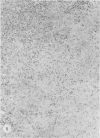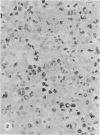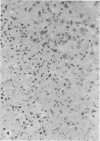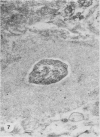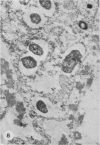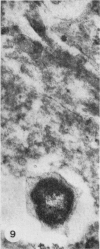Abstract
Grivet monkeys were infected intranasally with the virulent Schu-S4 strain of F. tularensis. One group of animals remained untreated and two other groups received a 7-day course of kanamycin therapy starting on either the third or fourth day after infection. Untreated monkeys developed pyrexia and mucopurulent oculonasal discharge and died 5--7 days after infection. All had pyogranulomatous lesions in the liver, spleen, respiratory tract and lymph nodes. Electron microscopy of liver and spleen showed phagocytosis of F. tularensis organisms by macrophages and polymorphonuclear leucocytes, but many bacteria survived phagocytosis and were released on destruction of the cells. Kanamycin therapy enabled most monkeys to survive the disease, but it did not prevent the development of persistent lesions in all animals. Caseous nodules were larger and more widespread in the organs of monkeys in which treatment was delayed until the fourth day of infection.
Full text
PDF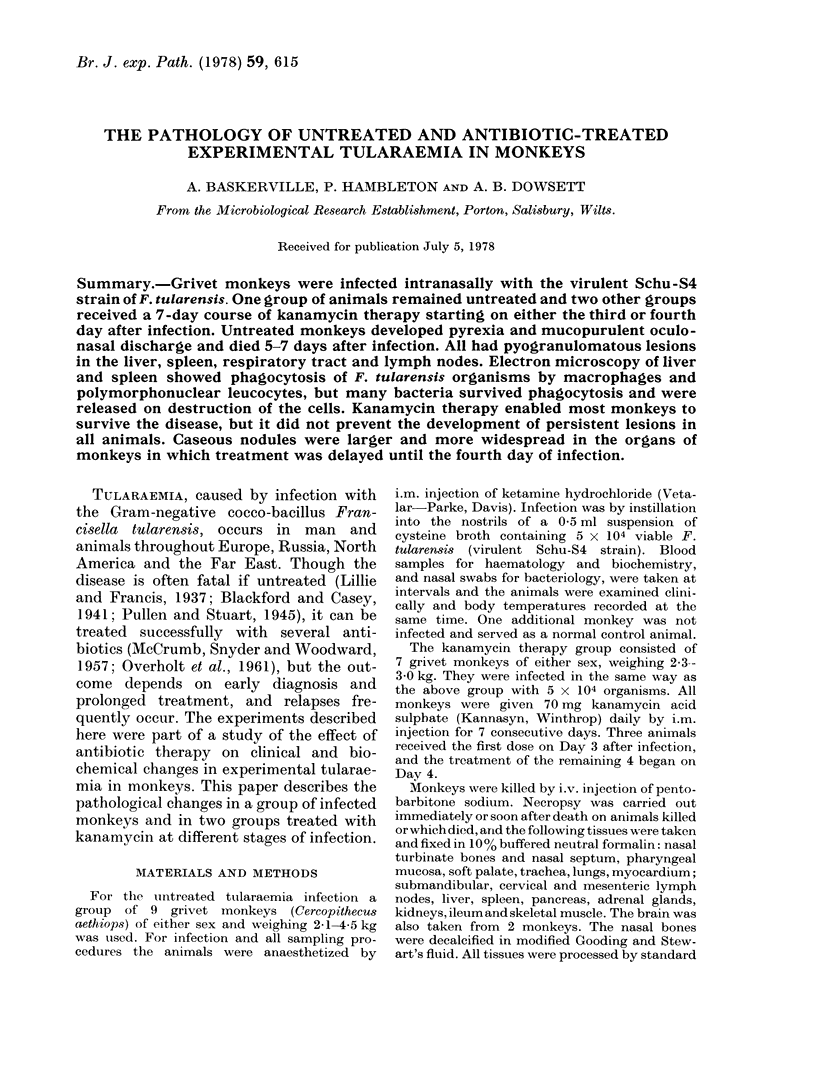
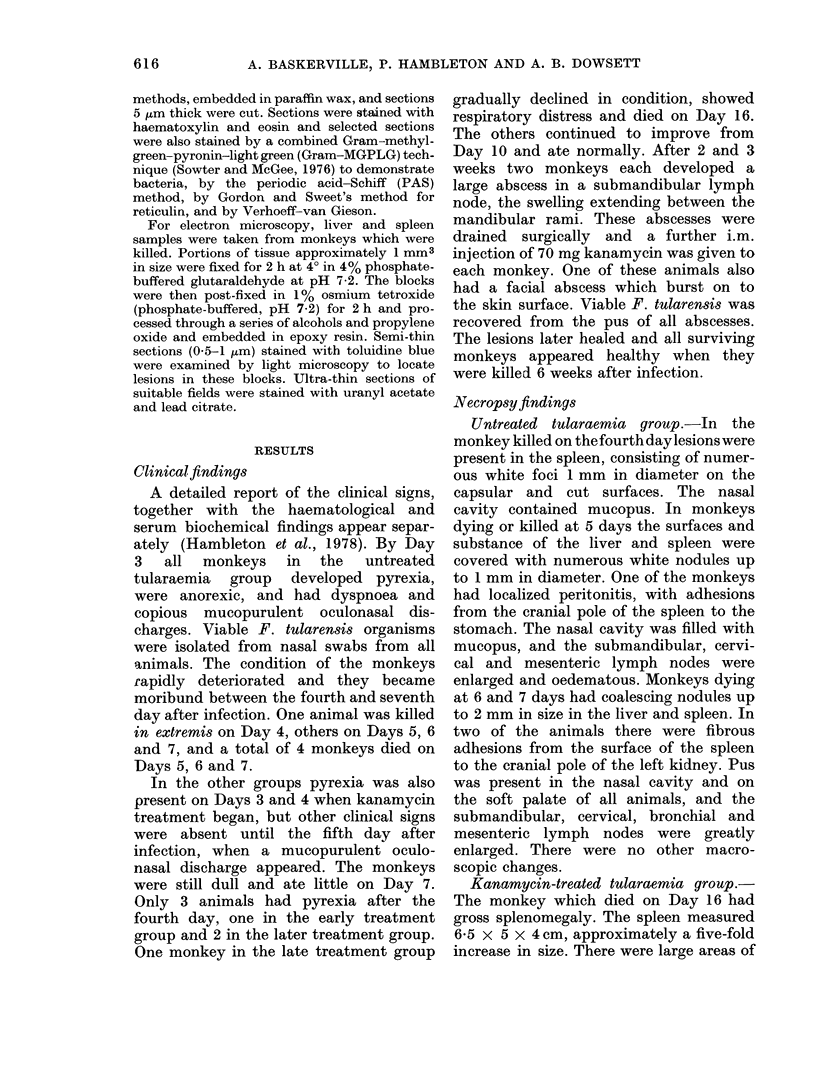

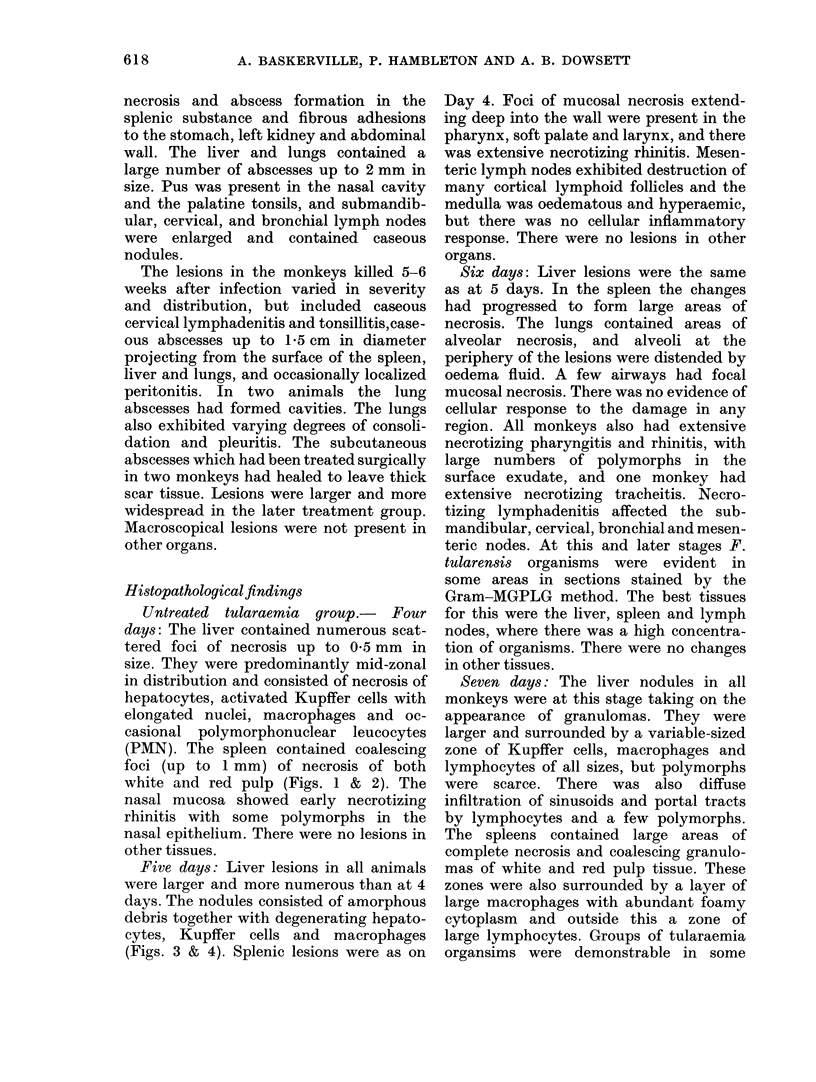
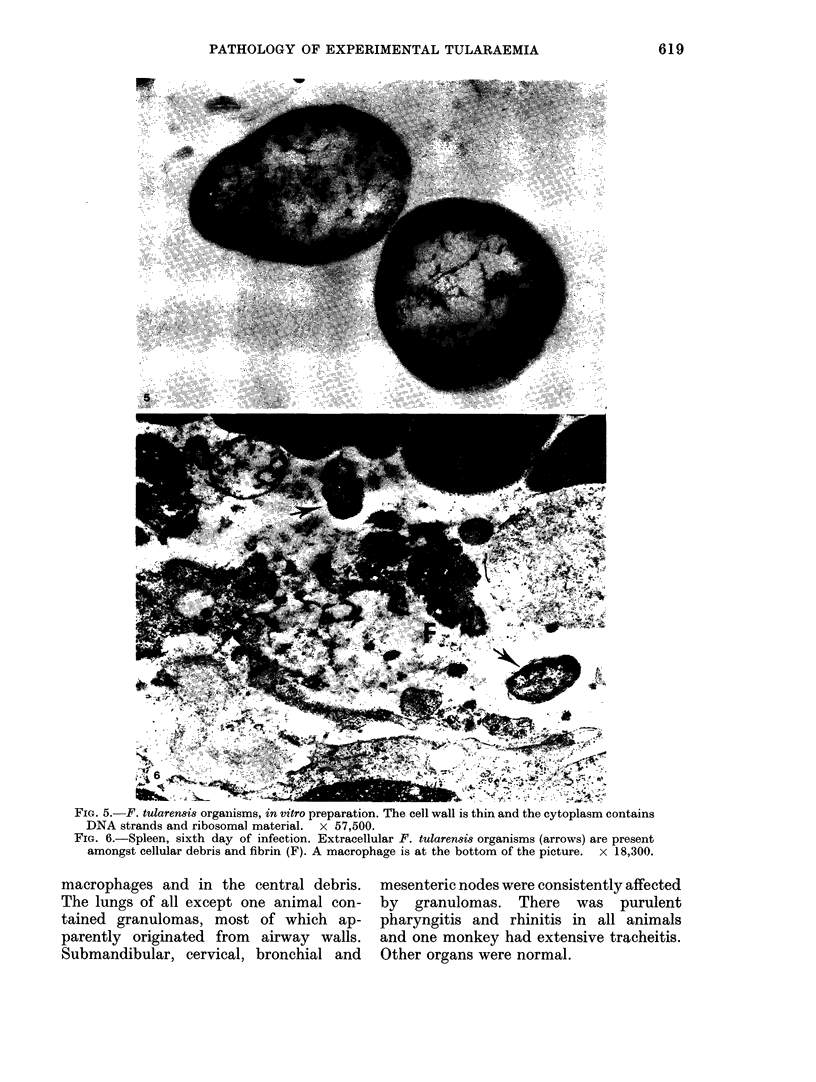
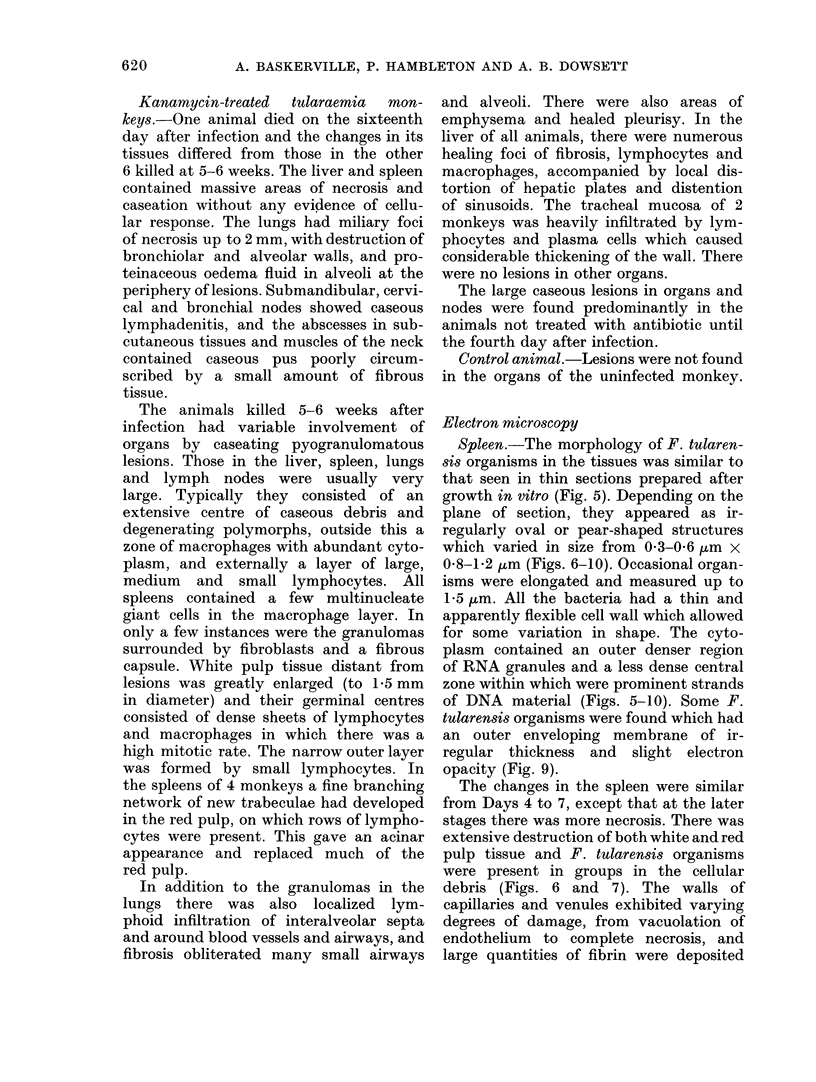
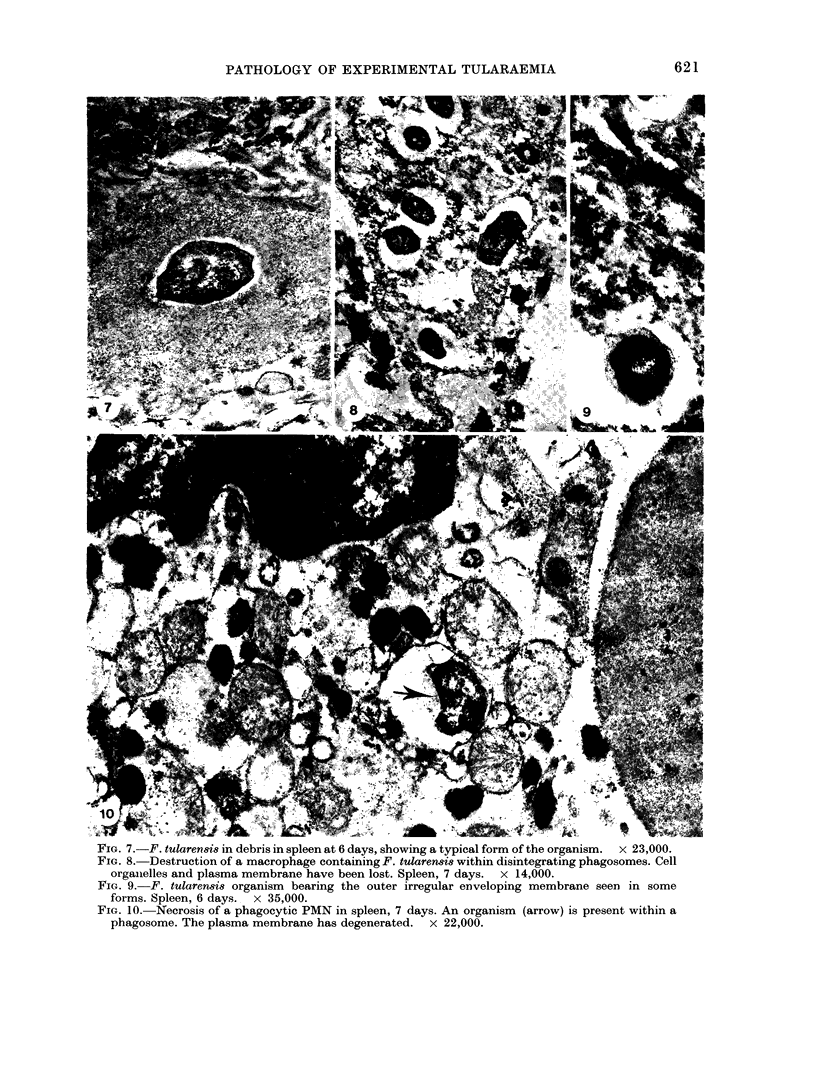
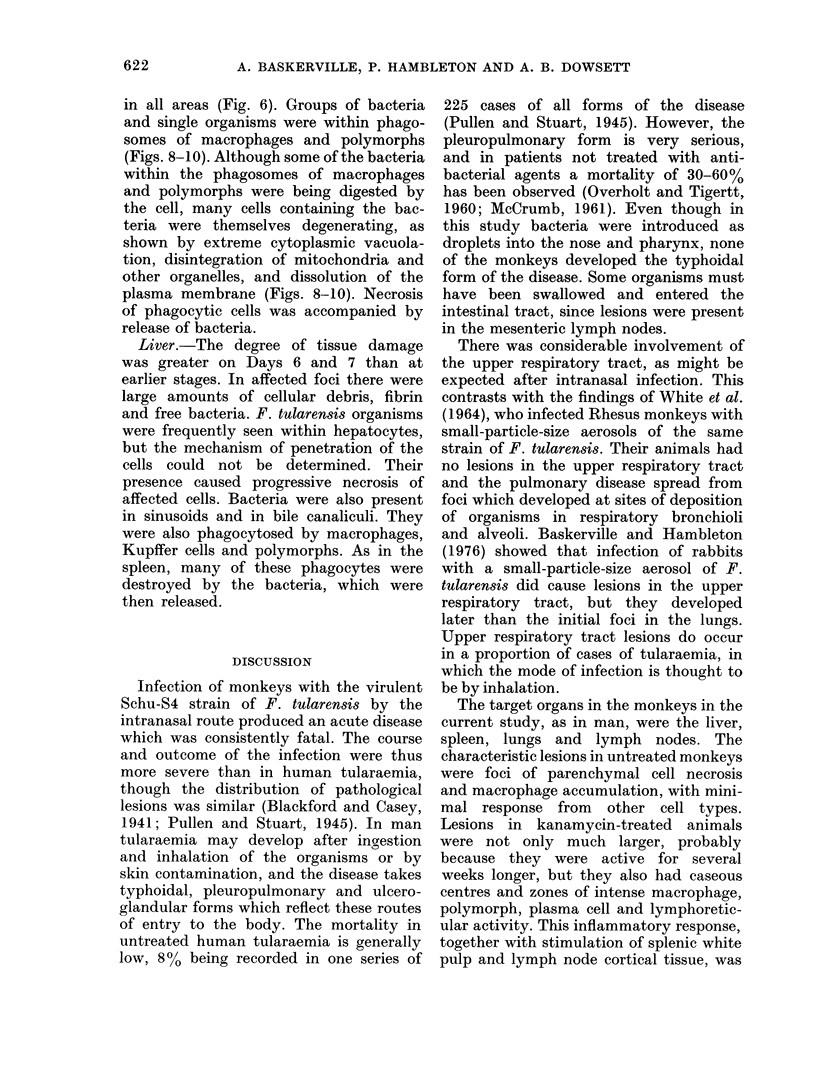
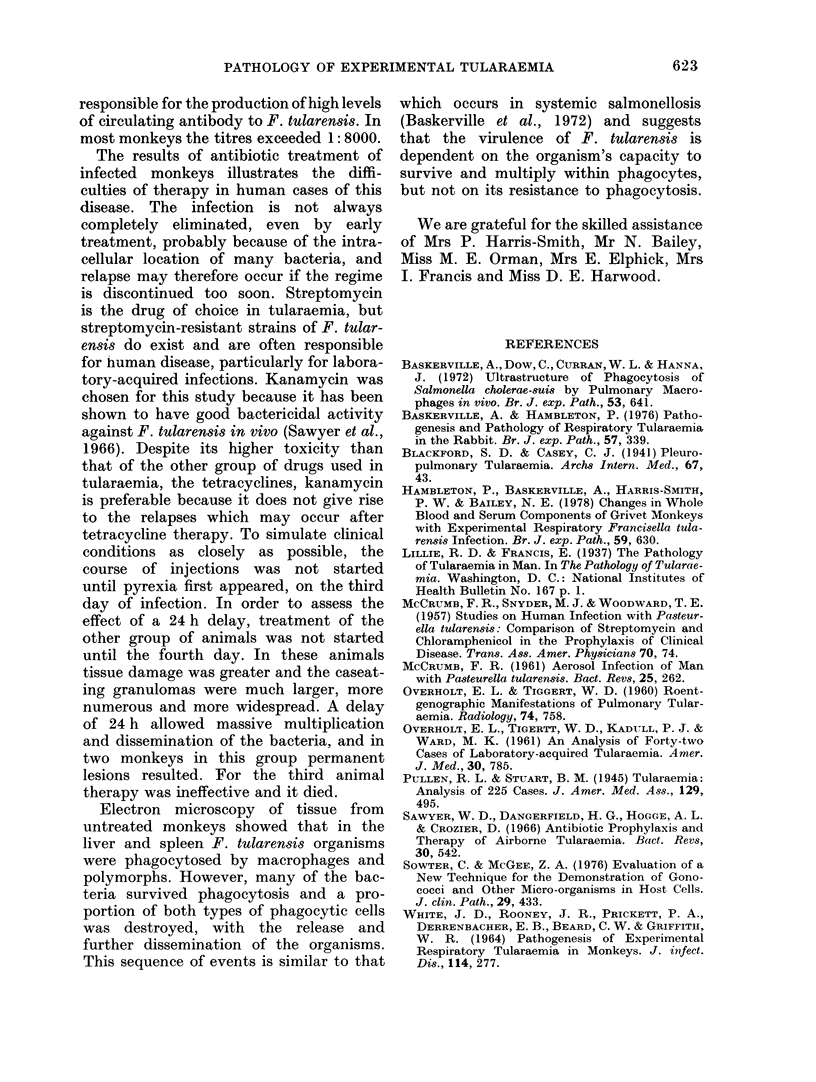
Images in this article
Selected References
These references are in PubMed. This may not be the complete list of references from this article.
- Baskerville A., Dow C., Curran W. L., Hanna J. Ultrastructure of phagocytosis of Salmonella cholerae-suis by pulmonary macrophages in vivo. Br J Exp Pathol. 1972 Dec;53(6):641–647. [PMC free article] [PubMed] [Google Scholar]
- Baskerville A., Hambleton P. Pathogenesis and pathology of respiratory tularaemia in the rabbit. Br J Exp Pathol. 1976 Jun;57(3):339–347. [PMC free article] [PubMed] [Google Scholar]
- Hambleton P., Baskerville A., Harris-Smith P. W., Bailey N. E. Changes in whole blood and serum components of grivet monkeys with experimental respiratory Francisella tularensis infection. Br J Exp Pathol. 1978 Dec;59(6):630–639. [PMC free article] [PubMed] [Google Scholar]
- McCRUMB F. R., Jr, SNYDER M. J., WOODWARD T. E. Studies on human infection with Pasteurella tularensis; comparison of streptomycin and chloramphenicol in the prophylaxis of clinical disease. Trans Assoc Am Physicians. 1957;70:74–80. [PubMed] [Google Scholar]
- McCrumb F. R. AEROSOL INFECTION OF MAN WITH PASTEURELLA TULARENSIS. Bacteriol Rev. 1961 Sep;25(3):262–267. doi: 10.1128/br.25.3.262-267.1961. [DOI] [PMC free article] [PubMed] [Google Scholar]
- OVERHOLT E. L., TIGERTT W. D., KADULL P. J., WARD M. K., CHARKES N. D., RENE R. M., SALZMAN T. E., STEPHENS M. An analysis of forty-two cases of laboratory-acquired tularemia. Treatment with broad spectrum antibiotics. Am J Med. 1961 May;30:785–806. doi: 10.1016/0002-9343(61)90214-5. [DOI] [PubMed] [Google Scholar]
- OVERHOLT E. L., TIGERTT W. D. Roentgenographic manifestations of pulmonary tularemia. Radiology. 1960 May;74:758–765. doi: 10.1148/74.5.758. [DOI] [PubMed] [Google Scholar]
- Sawyer W. D., Dangerfield H. G., Hogge A. L., Crozier D. Antibiotic prophylaxis and therapy of airborne tularemia. Bacteriol Rev. 1966 Sep;30(3):542–550. doi: 10.1128/br.30.3.542-550.1966. [DOI] [PMC free article] [PubMed] [Google Scholar]
- Sowter C., McGEE Z. A. Evaluation of a new technique for the demonstration of gonococci and other micro-organisms in host cells. J Clin Pathol. 1976 May;29(5):433–437. doi: 10.1136/jcp.29.5.433. [DOI] [PMC free article] [PubMed] [Google Scholar]
- WHITE J. D., ROONEY J. R., PRICKETT P. A., DERRENBACHER E. B., BEARD C. W., GRIFFITH W. R. PATHOGENESIS OF EXPERIMENTAL RESPIRATORY TULAREMIA IN MONKEYS. J Infect Dis. 1964 Jun;114:277–283. doi: 10.1093/infdis/114.3.277. [DOI] [PubMed] [Google Scholar]



